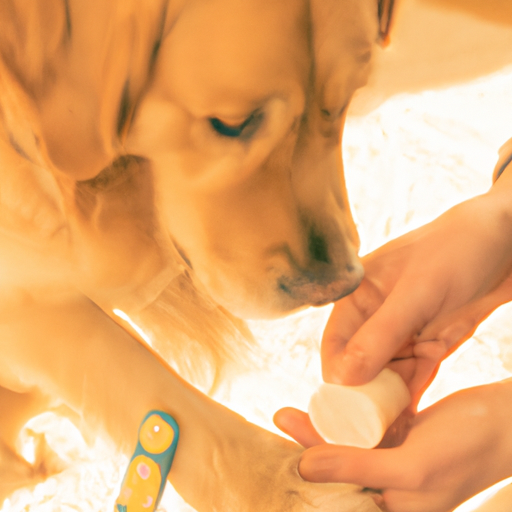As a dedicated and loving pet owner, you play a critical role in ensuring your furry friend’s well-being. Sometimes, despite your best efforts, they can suffer minor injuries like cuts. Here’s how you can manage these types of wounds at home.
Identifying a Cut on Your Dog
First and foremost, you need to recognize when your dog has a cut. Dogs are resilient and may not show obvious signs of pain. Look out for the following signs:
- Limping or favoring one leg
- Excessive licking of a particular area
- Visible blood or wound
- Changes in behavior or mood
Remember, some dogs have thick fur that can hide wounds. Routine checks can help you spot any abnormalities.
Preparing the Wound for Treatment
The second step involves preparing the wound for treatment. Here’s what you need to do:
- Calm your dog. Reassure them with your voice and gently pet them.
- Clear the area around the wound. Trim the fur if necessary, but be careful not to pull on the skin or cause additional pain.
- Clean the wound. Use mild soapy water and rinse thoroughly.
Avoid using hydrogen peroxide as it can cause tissue damage. Instead, use a saline solution or a vet-approved antiseptic.
Dressing the Wound
Once the wound is clean, you need to dress it to prevent infection. You’ll need the following supplies:
- Non-stick gauze pads
- Adhesive tape
- A clean piece of cloth or a bandage
Follow these steps:
- Apply the non-stick gauze pad on the wound.
- Wrap the clean cloth or bandage around the gauze.
- Secure the dressing with adhesive tape.
Remember to change the dressing daily or if it becomes dirty or wet.
Monitoring the Wound
Now that you’ve treated the wound, your job isn’t over. You need to monitor the wound for signs of healing or infection.
| Signs of Healing | Signs of Infection |
|---|---|
| Reduction in redness and swelling | Increased redness and swelling |
| The wound begins to close | The wound appears to be getting bigger |
| Less pain or discomfort for your dog | Your dog seems to be in more pain |
| The wound looks clean | Pus or a foul smell coming from the wound |
If you notice any signs of infection, take your dog to the vet immediately.
When to Seek Professional Help
Some cuts are too severe to be treated at home. If the cut is deep, won’t stop bleeding, or is located near your dog’s eye or other sensitive area, take your dog to the vet.
Remember, it’s always better to be safe than sorry. If you’re unsure about how to treat a cut, seek professional help.
FAQs
Q: How often should I change the dressing?\
A: Change the dressing daily or if it gets dirty or wet.
Q: Can I use hydrogen peroxide to clean the wound?\
A: No, it can cause tissue damage. Use a saline solution or vet-approved antiseptic instead.
Q: How can I tell if the cut is healing?\
A: Signs of healing include a reduction in redness and swelling, the wound beginning to close, and less discomfort for your dog.
Q: When should I take my dog to the vet?\
A: If the cut is deep, won’t stop bleeding, or is located in a sensitive area, it’s best to seek professional help.
Caring for a wounded dog can be stressful, but with the right knowledge, you can handle minor cuts at home. Remember, your dog’s health and happiness depend on your vigilance and care.



